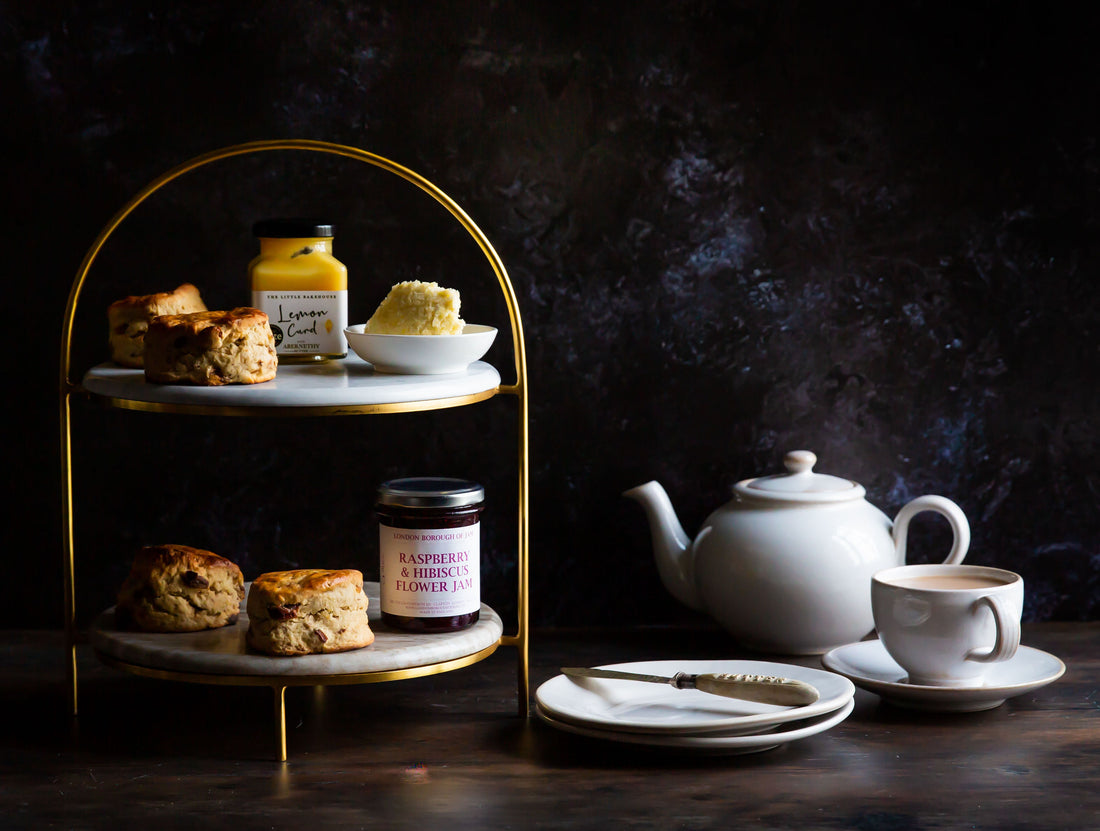
The History of Afternoon Tea, a Truly British Affair.
Share
Perhaps the most quintessential of British customs, Afternoon tea is surprisingly, a relatively new tradition. Whilst tea drinking dates back to the third millennium BC in China and was popularised in England during the 1660s by King Charles II, it wasn’t until 1840 that the concept of ‘Afternoon tea’ first appeared. It’s the seventh Duchess of Bedford, Anna, who we have to thank for the invention of Afternoon tea. Dinner was served fashionably late in her household, thus leaving a long period of time between lunch and dinner. The Duchess would become hungry around 4pm & so asked that a tray of tea, bread and butter and cake be brought to her room every day at that time. When Anna went to London, she brought the occasion with her, inviting friends to join her and soon this pause for tea became a fashionable social event & quickly received royal endorsement. Queen Victoria loved the idea and began to enjoy a daily ritual of having light cake with buttercream and fresh raspberries – later known as Victoria sponge – to accompany her precious cup of tea. By the 1880’s female aristocracy were even dressing for the occasion, changing into long gowns, gloves and hats for afternoon tea which was usually served in the drawing room.
During the Edwardian period, taking tea 'At Home' faded as the desire to travel increased. New tea lounges in luxury hotels & tea gardens quickly sprang up everywhere serving Afternoon tea at four o' clock.
The two World Wars radically changed the taking of Afternoon tea, especially with tea rationing continuing into the 50's but the custom did survive until well into the mid-20th century. However, as the British began their love affair with coffee shops, Afternoon tea was reduced to a tourist pursuit & reserved for special occasions.
Why not give your mum an afternoon tea experience for a memorable gift this Mother's day with one of our luxury hampers.
During the Edwardian period, taking tea 'At Home' faded as the desire to travel increased. New tea lounges in luxury hotels & tea gardens quickly sprang up everywhere serving Afternoon tea at four o' clock.
The two World Wars radically changed the taking of Afternoon tea, especially with tea rationing continuing into the 50's but the custom did survive until well into the mid-20th century. However, as the British began their love affair with coffee shops, Afternoon tea was reduced to a tourist pursuit & reserved for special occasions.
Why not give your mum an afternoon tea experience for a memorable gift this Mother's day with one of our luxury hampers.
